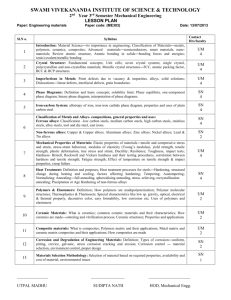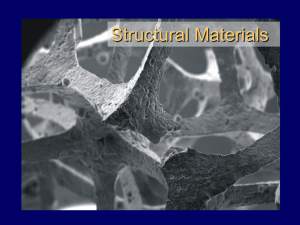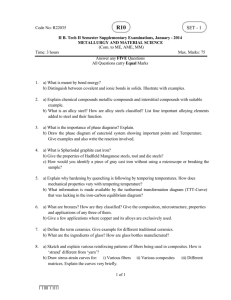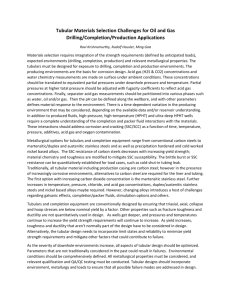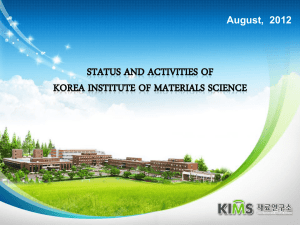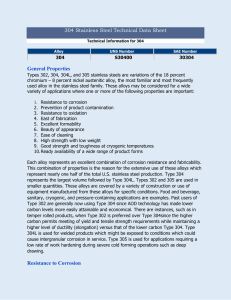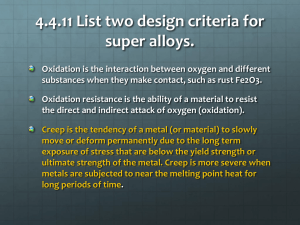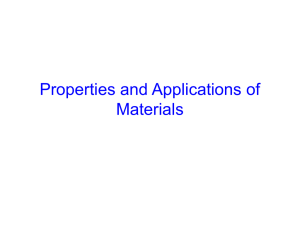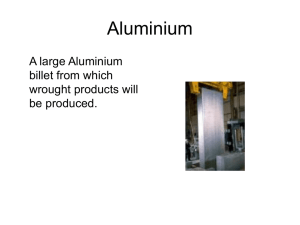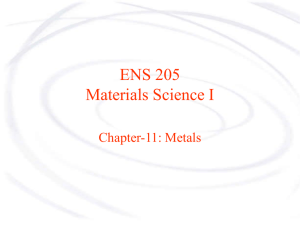Metals and Alloys
advertisement
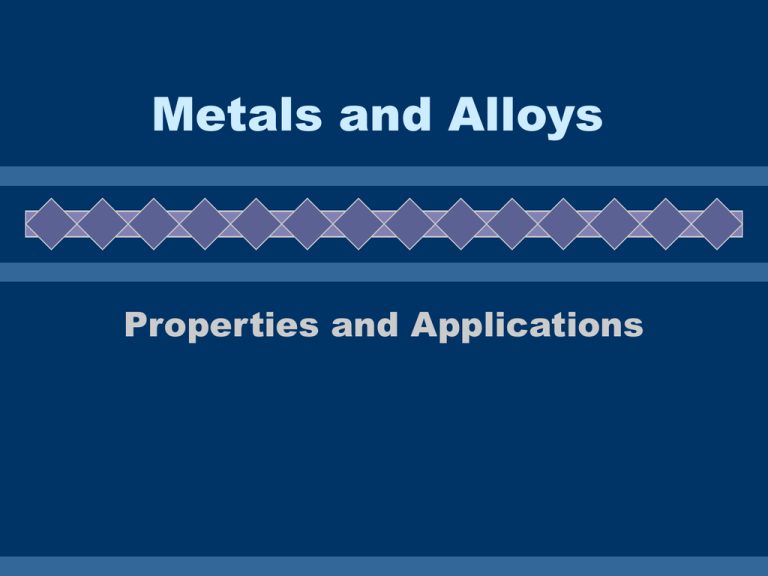
Metals and Alloys Properties and Applications Ferrous alloys Plain carbon steels Alloy steels Stainless steels Cast irons Low-carbon steels Contain less than 0.25%C Not very responsive to heat treatments soft, weak, tough and ductile Machinable, weldable, not expensive YS~275 MPa, TS~415-550MPa, 25% el. High strength low alloy steels (HSLA steels) Contain alloying elements such as Cu, V, Ni, Mo in combined concentrations of >10 wt% Stronger than plain low-C steels Ductile, formable and machinable Medium-carbon steels Contain 0.25-0.60 wt.% carbon Can be heat-treated but only in thin sections Stronger than low-C steels but less ductile and less tough Good wear resistance Railway wheels & tracks, gears High carbon steels 0.60 -1.4 wt.% C Hardest, strongest, least ductile of all steels Almost always used in tempered condition Especially wear resistant Form hard and wear resistant carbides with alloying elements Used in cutting tools, dies, knives, razors, springs and high strength wires Stainless steels Highly resistant to corrosion in many environments Predominant alloying element is at least 11% Chromium Corrosion resistance may be enhanced by Ni and Mo additions 4 classes: ferritic, austenitic, martensitic and precipitation-hardening Used at high temperatures (upto ~ 1000 C) and severe environments Gas turbines, steam boilers, aircraft, missiles Cast irons Theoretically contains > 2.14 wt.% carbon Usually contains between 3.0-4.5 wt.% C, hence very brittle Also 1-3 wt.% silicon Since they become liquid easily between 1150 C and 1300 C, they can be easily cast Inexpensive Machinable, wear resistant 4 types: gray cast iron, nodular cast iron, white cast iron, malleable cast iron Nonferrous alloys Aluminum alloys Copper alloys Magesnium alloys Nickel alloys Titanium alloys Refractory metals Superalloys Aluminum alloys Low density - 2.7 gm/cc High electrical and thermal conductivities High ductility Low melting point and strengths Cast or wrought Temper designation Age hardening Copper alloys Soft, ductile, difficult to machine Highly resistant to corrosion Excellent electrical & thermal conductivity Can be alloyed to improve hardness Cold worked to get the maximum hardness Cu-Zn = brass; Cu-X = bronzes Magnesium alloys Lowest density of all structural metals= 1.7 gm/cc Relatively soft and low elastic modulus (45 GPa) Have to be heated to be deformation processed Burns easily in the molten and powder states Susceptible to corrosion in marine environments Competing with plastics Nickel alloys Quite ductile and formable Highly corrosion resistant, especially at high temperature Essential part of austenitic stainless steels Used in pumps, valves in seawater and petroleum environments Titanium alloys Low density, high melting point High specific strength and elastic modulus superior corrosion resistance in many environments Absorb interstitials at high temperatures Highly reactive with other materials and hence non-conventional processing techniques have been developed Highly used in aerospace applications Refractory metals These are extremely high melting metals Nb, Ta, Mo, W Very high strengths and hardness Very high elastic modulus W alloys used in x-ray tubes, filaments Ta & Mo used with stainless steels for corrosion resistance Ta is virtually immune to all environments below 150 C
